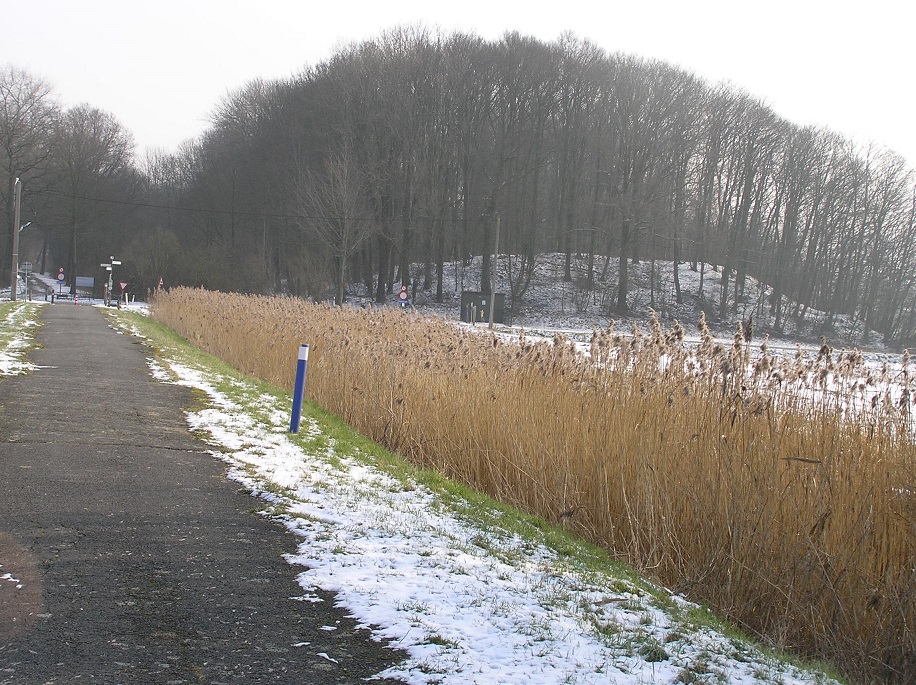Spoilbank referred to both the left and right mounds at the Ypres entrance to the Palingbeek. During the first years of the war these became honeycombed with underground chambers used by soldiers held in reserve at The Bluff front line. The most heavily populated was the southern, Voormezele side even though its southern flank was open to observation from the White Chateau ridge.

In April 1918 this position was captured in the German Spring Offensive and the British were forced back to ‘Iron Bridge’ and from the Lankhof Chateau position, between locks 8 and 9. The British line was taken over in August by Americans of 120th Regiment. At this point, Spoilbank South became the best vantage point that the Germans had, looking over Lankhof to the rubble of Ypres.

On first examination in 2010, there was a small but clearly defined observation position on top of this bank in the shape of an anchor, with the curved trench facing the battlefront and a communication trench leading away at the centre point. However in 2014, tree felling activity using a caterpillar vehicle to haul away the trees practically erased all traces of this in spite of protests. Tragically, the contractors ran their vehicle the entire length of Lock House Bank, mashing the traces of collapsed dugouts and their entrance-ways of the allied reserve positions and causing the collapse of a major underground listening post between Kleine Bastion and Backofen Beobachtung.